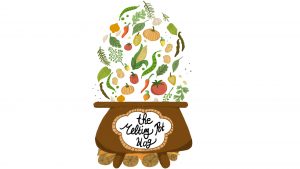Japan
Japan, or Nihon as reffered to by the locals which translates to ” The Land Of The Rising Sun ” has a population of 126,168,156 spread over 4000 Islands. The main four islands being Hokkaido, Honshu, Shikoku and Kyushu. These islands are home to 140 dormant volcanoes and 60 active.
What The Ancient Japanese Ate
Japanese food is very different when compared to other cultures, and that’s due to a variety of reasons. The positioning of the country and the fact it’s surrounded by water does bring in a lot of sea food into Japanese cuisine, but there are many ancient Japanese foods that have stood the test of time.
At its core, Japanese cuisine has always been influenced by other countries. In fact, even the early Japanese cuisine has been under the influence of food found in China. One of the major foods in Japanese cuisine is rice, with soybeans and wheat being introduced shortly after it. When the Asuka period started, Buddhism became the official religion so fish and meat were prohibited. It was during the 8-9 centuries when emperors were prohibiting people to kill animals. It’s also when chopsticks were introduced to Japan


During that time, spices were rare because there was no meat to use them on. However, that also allowed people to maintain a healthy lifestyle, since they didn’t use oil or fat during the cooking process. Soon after that, sushi became a cult hit because it was fermented in boiled rice, and it was free of bacteria as well. Around the 15th century, sushi became even more important because the fermentation period was quicker, and that made it easier for people to snack on sushi and move on. However, many were still consuming sushi without even fermenting it.
Nigiri & Hand Rolled Sushi
What a lot of people don’t know is that it was around the 19th century when the nigri type and hand rolled sushi were invented. Soon after that, Japan started trading deals with various western countries. People were finally allowed to eat meat in public, and new foods were introduced to the country too. WWII also had a very strange influence too, since foods like spam and eggs that were obviously American started appearing more and more in Japan as well.

One of the interesting things about Japanese food is that there’s always been a focus on food seasonality. Seasonings like soy sauce are a staple for the Japanese cuisine, same with garnishes and salads. On top of that, Japanese chefs have different cooking techniques too. These can range from deep frying to simmering, grilling, preparing raw food, adding dressings and so on. That adds a lot of diversity to these dishes, while also bringing in a very exciting perspective over the Japanese cuisine and its exciting influences.
Popular Japanese Recipes
Lorem ipsum dolor sit amet, consectetur adipiscing elit. Ut elit tellus, luctus nec ullamcorper mattis, pulvinar dapibus leo.











